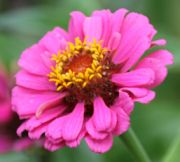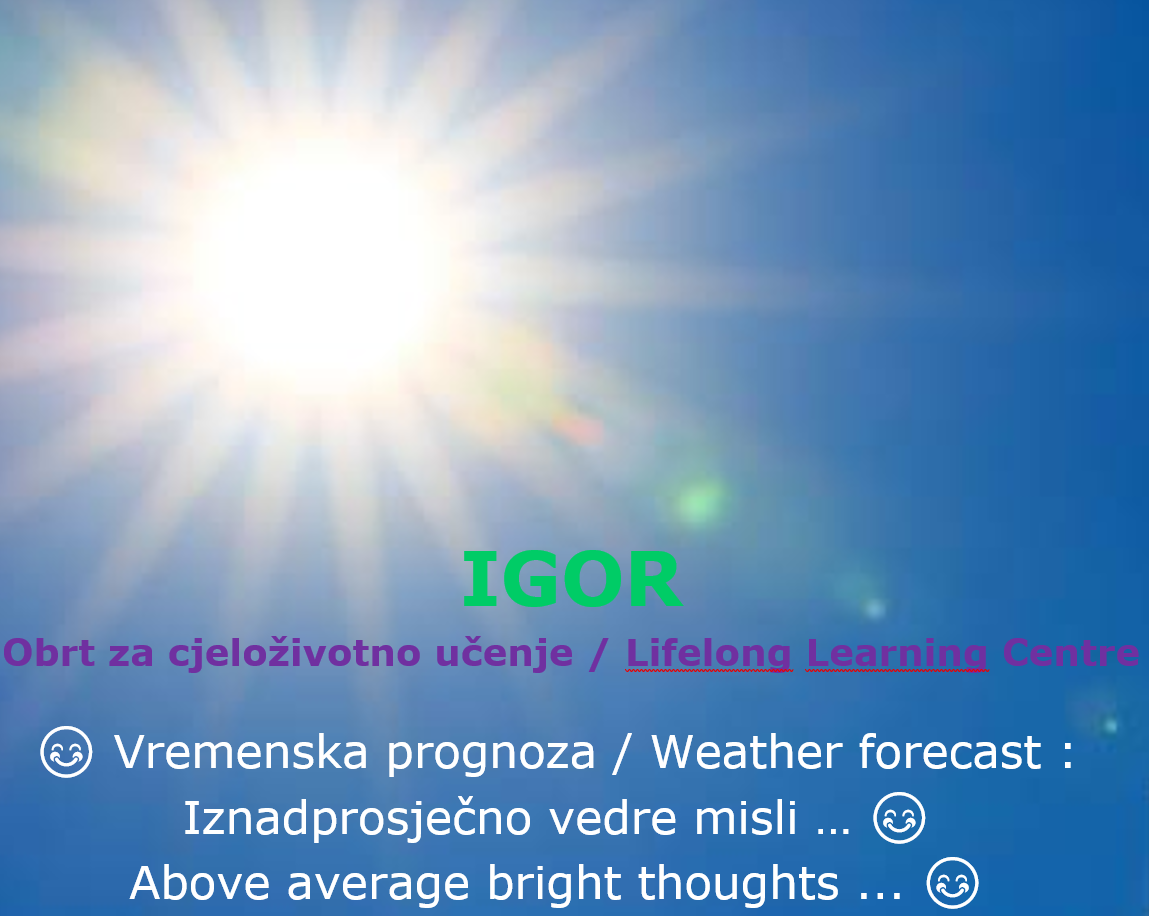The village of Marindvor is located in the rural part of Republic of Croatia in Požega-Slavonia County, as a suburb of the City of Požega. Marindvor is located about 5 km north of the city of Požega at the foot of the UNESCO World Geopark Papuk. Neighboring villages are Krivaj, Kunovci and Bankovci in the north, Novi Štitnjak in the south, Stara Lipa in the west and Štitnjak in the east. The postal code is 34000 Požega, Republic of Croatia, European Union. The calling number is +385 (0)34, and the car registration number is PŽ.
The geographical coordinates of the village of Marindvor are 45°22′23″N 17°38′24″E.
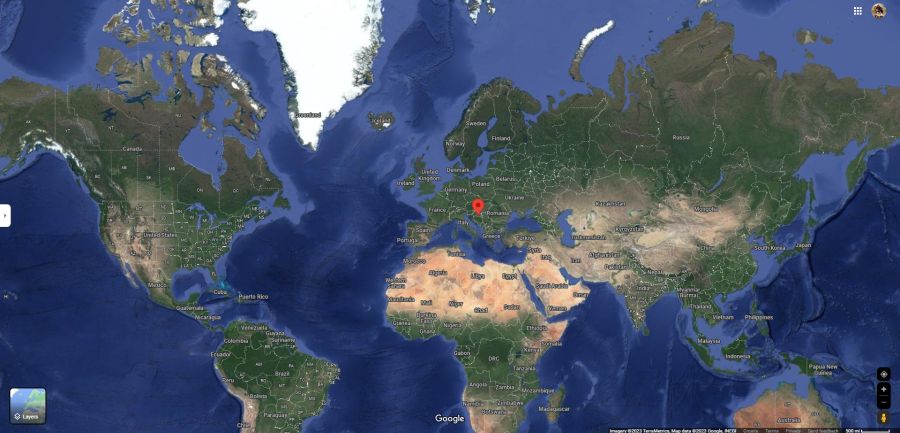
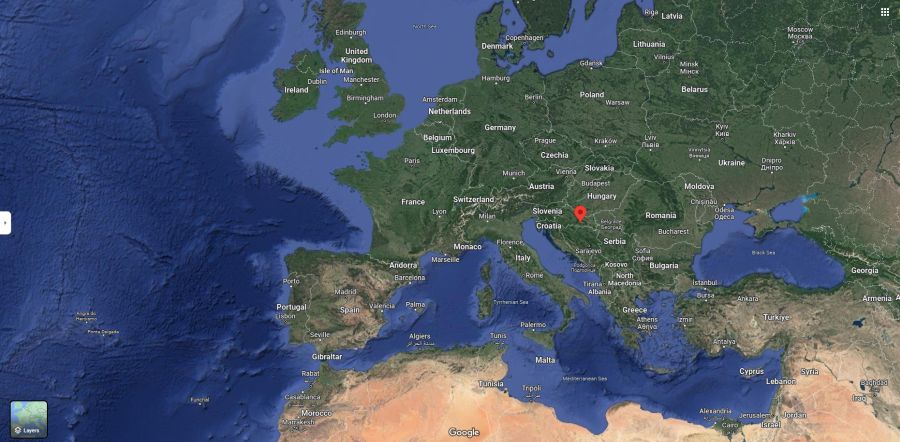
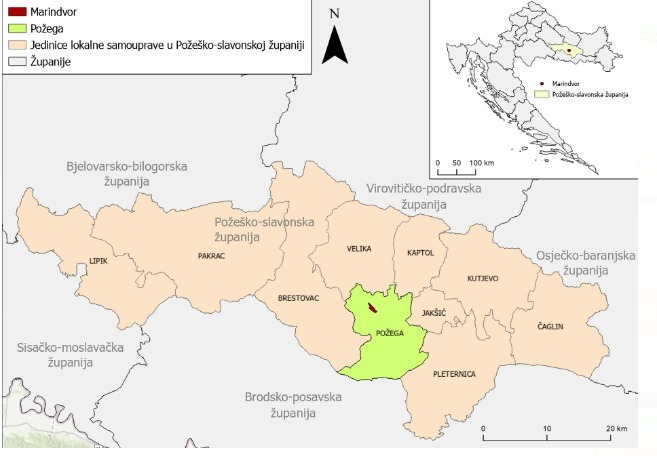
Image: Location of the City of Požega
Source: Author Karla Laginja, University of Zagreb, Faculty of Science, Graduate University Study of Geography; Research-oriented track, Field: Spatial Planning and Regional Development
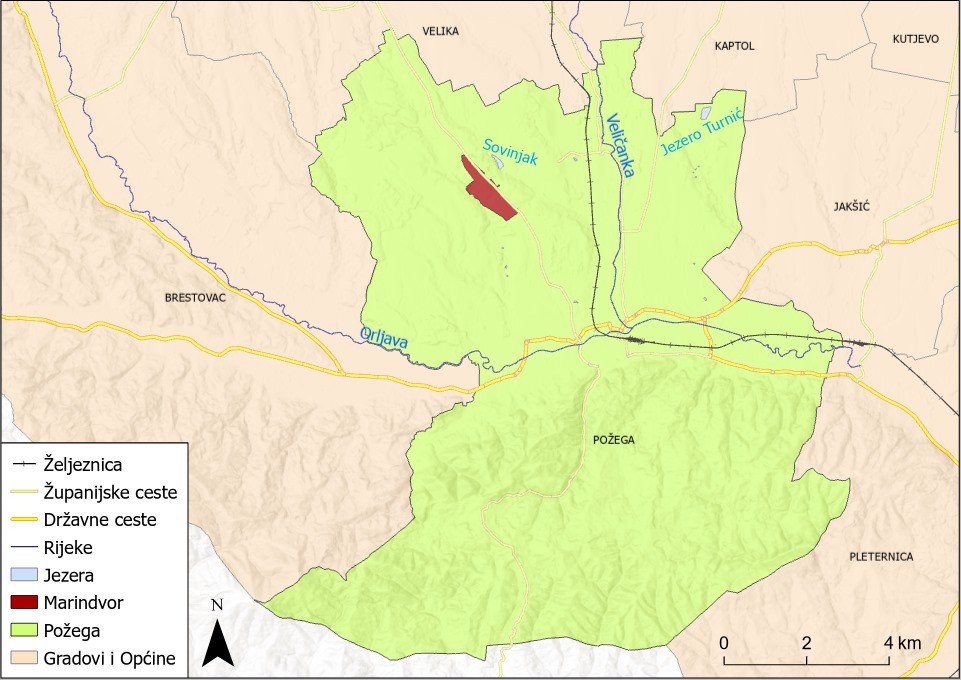
Image: Location of the suburban settlement Marindvor, City of Požega
Source: Author Karla Laginja, University of Zagreb, Faculty of Science, Graduate University Study of Geography; Research-oriented track, Field: Spatial Planning and Regional Development
According to the 2021 census, Marindvor had 118 inhabitants.
Population movement from 1857 to 2021 in the village of Marindvor.


Image: Travel time by car to Marindvor
Source: www.smappen.com, author Patricija Velečki, University of Zagreb, Faculty of Science, Graduate University Study of Geography; Research-oriented track, Field: Spatial Planning and Regional Development
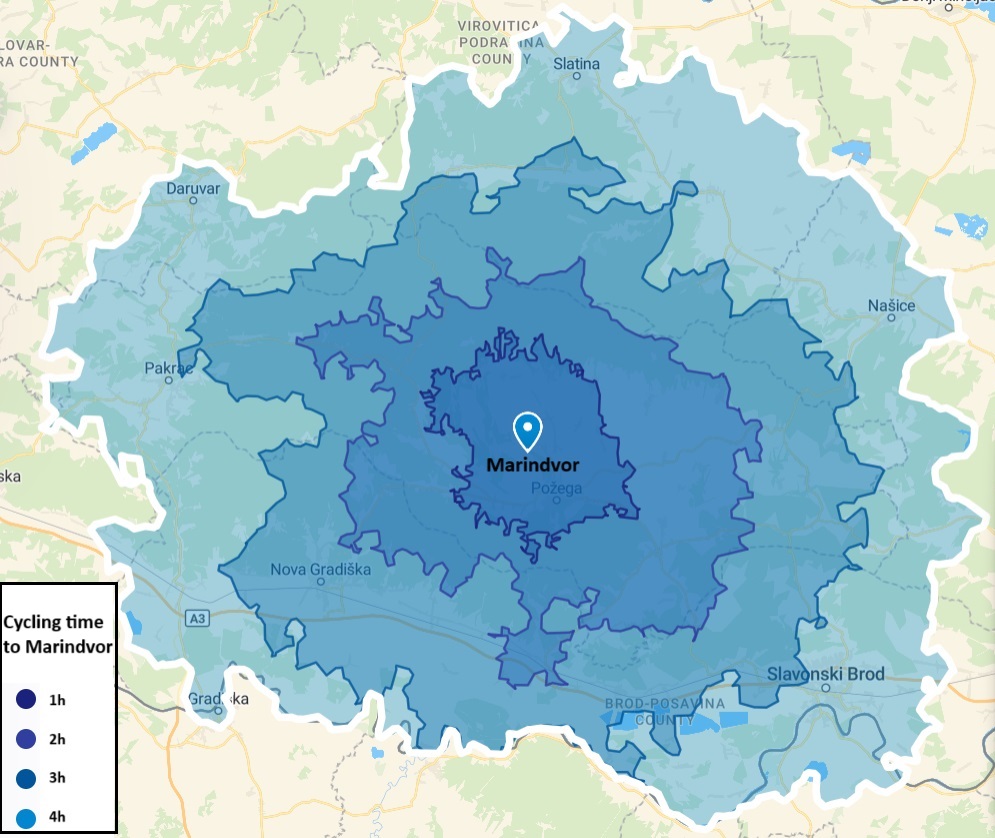
Image: Travel time by bicycle to Marindvor
Source: www.smappen.com, author Patricija Velečki, University of Zagreb, Faculty of Science, Graduate University Study of Geography; Research-oriented track, Field: Spatial Planning and Regional Development
The Jasikovac Forest is a natural entity and the most valuable part of the landscape of the village of Marindvor, which is a suburban settlement of the City of Požega. The forest is deeply woven into the history and tradition of Marindvor residents and is part of the cultural heritage through the customs and coexistence of generations of our residents. In the forest there is a source of drinking water, Vlašica, which has been used for generations by the inhabitants of the villages of Marindvor and Štitnjak. The Jasikovac Forest is part of our identity, and at the same time a strong source of sustainable development of the suburban settlement of Marindvor.
There are century-old trees in the forest, which, according to locals, were also planted by Vladimir Aladar pl. Reiner Brestovački (Požega 1883 – 1962) who lived in Marindvor with his wife Marija Sarkotić (1888 Karlovac – 1968 Osijek) and family. Aladar graduated from the nautical academy in Bakro and devoted himself to his estate in Marindvor, where he built a spiritan. His wife, Marija, is the daughter of Josip Sarkotić, the director of the Zagreb Royal High School for Girls, and the niece of Field Marshal Stjepan baron Sarkotić, commander of Bosnia, Herzegovina and Dalmatia. The Reiner family founded the Dr. Mija Reiner Family Foundation to support artisans and to establish an orphanage. Father of Aladar I. Dr. chem. Michael Mijo Otto pl. Reiner, lord of Brestovački (Veliki Bečkeret 27.9.1844 - 1.9.1925. Podbrežje near Maribor) as a city representative, deputy mayor of Požega, then a member of the county assemblies and the economic branch, distinguished himself by his zeal for promoting the economy and industrial enterprises in the Požega region and patented the anti-malarial drug 'Malarin'.
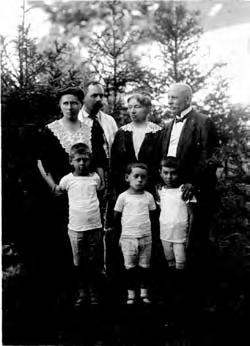
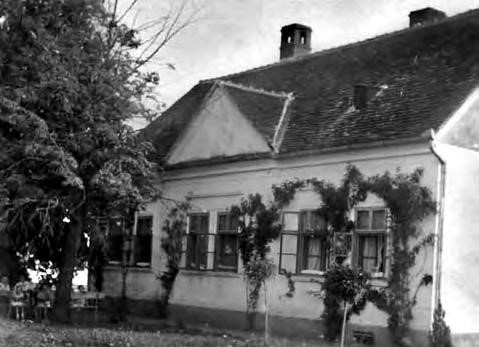
Image: Michael and Aladar with their family in Marindvor and Marindvor Castle
In the past period, the Jasikovac forest proved to be a natural protection of the inhabited part of Marindvor during storms coming from the north and northeast. During the summer heat, it brings us refreshment, which results in a few degrees Celsius lower temperature than in the City of Požega.
In the forest there is a rich animal world (various birds, squirrels, butterflies...) and plant life (oak, wild cherry, linden, hornbeam, elder, different mushrooms, wild plants, medicinal plants and much more) which contributes to biodiversity of our region and reduces the impact of climate change. Spatially speaking, the Jasikovac forest is within the City of Požega, which has a special value for all residents of Požeština.
Prehistoric Settlement of Marindvor
Marindvor is a registered prehistoric site documented during the last century by the Regional Institute for the Protection of Cultural Monuments in Osijek. The official records list two entries related to this area from that period: 'Prehistoric Settlement' and 'Neolithic/Eneolithic Site'.
The latter entry refers to a location mentioned by Dr. Hrvoje Potrebica, associate professor, in his 2000 master's thesis, noting that these are unknown sites. The findings consist of six stone axes donated by P. Pavičić to the Archaeological Museum in Zagreb and one accidentally discovered flat axe donated by Vladimir Aladar pl. Reiner Brestovački in 1934 to the Požega City Museum (then the Požega Valley Museum). These artifacts date back to the Neolithic (New Stone Age) or Eneolithic (Copper Age) and are stored in the mentioned museums. A reference is made to an article by archaeologist Dubravka Sokač-Štimac in the Požega Valley Museum Gazette No. 2-3 from 1979, titled 'Prehistoric Stone Axes of the Požega Valley'. On page 13, it describes a flat axe from Marindvor donated by Vladimir Aladar pl. Reiner Brestovački, with a drawing found on Plate IV under number 1. The entire flat axe is light green, well-preserved. The lower part is straight, and the upper part is rounded. The axe widens into a rounded blade. The stone is very well worked and polished. Inventory number 408, length 12.0 cm, width 2.0 – 4.7 cm, thickness 2.0 cm. Flat stone axes were primarily used as tools for land cultivation and forest clearing, as stated in the introductory part of the same article, page 5. 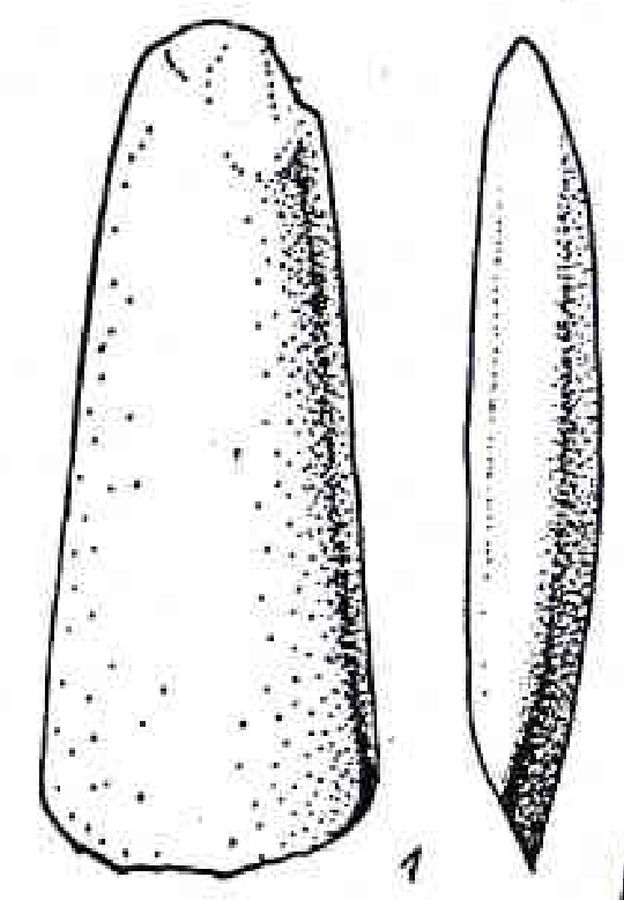
Image: Marindvor Stone Axe
The paper also mentions an axe with a shaft hole from Marindvor on page 8, specifically a hammer-type stone axe on page 23 and Plate XIII, 4, donated to the Požega Valley Museum (now the Požega City Museum) by Mato Horvat in 1962. A fragment of the upper part of a hammer-type axe, light green, well-preserved. The axe is preserved up to half of the shaft hole. The stone is well-polished. Inventory number 993, length 4.5 cm, width 4.8 cm, thickness 4.1 cm, hole diameter 1.6 cm. The axe was found in the 'Kunovac Pasture' in Marindvor.
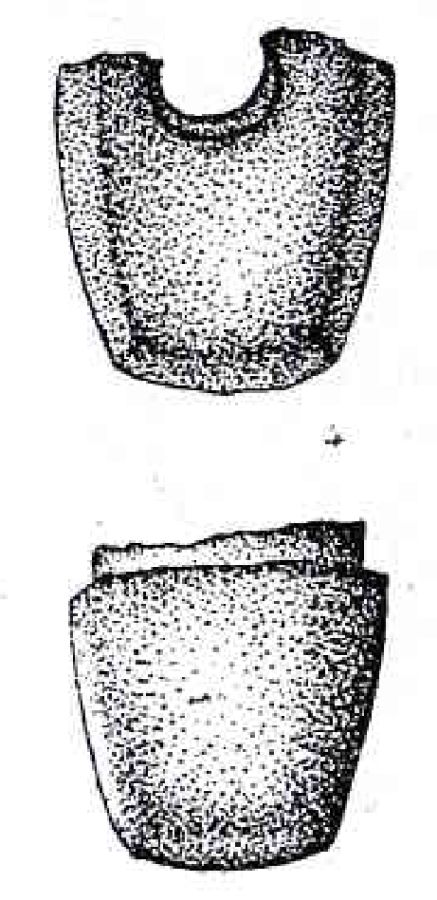
Image: Marindvor Hammer-Type Stone Axe
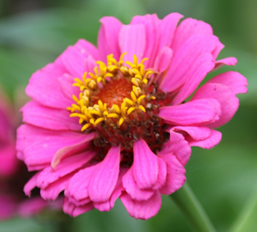
https://igor.hr/en/lifestyle/i-love-the-village-of-marindvor#sigProIda57bfb782d
